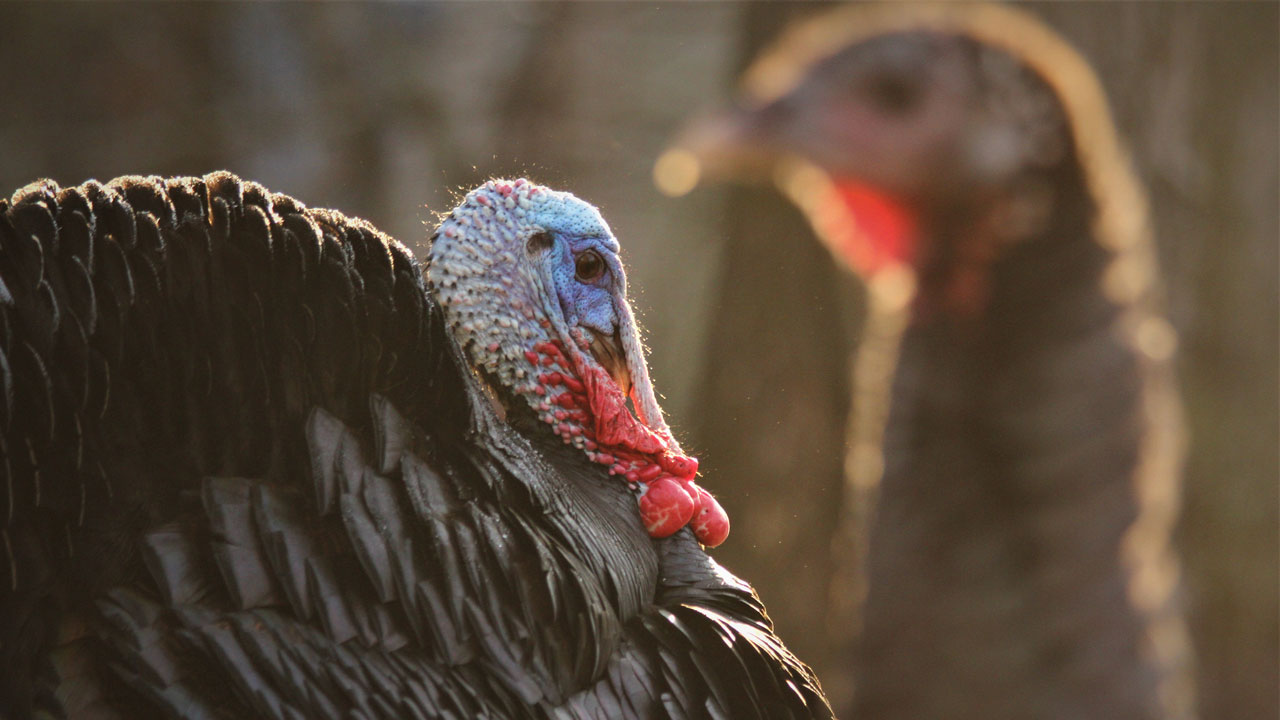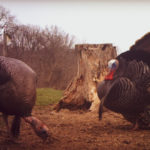Veteran turkey caller and accomplished hunter Mike Hanback gives us some helpful tips for turkey calling.
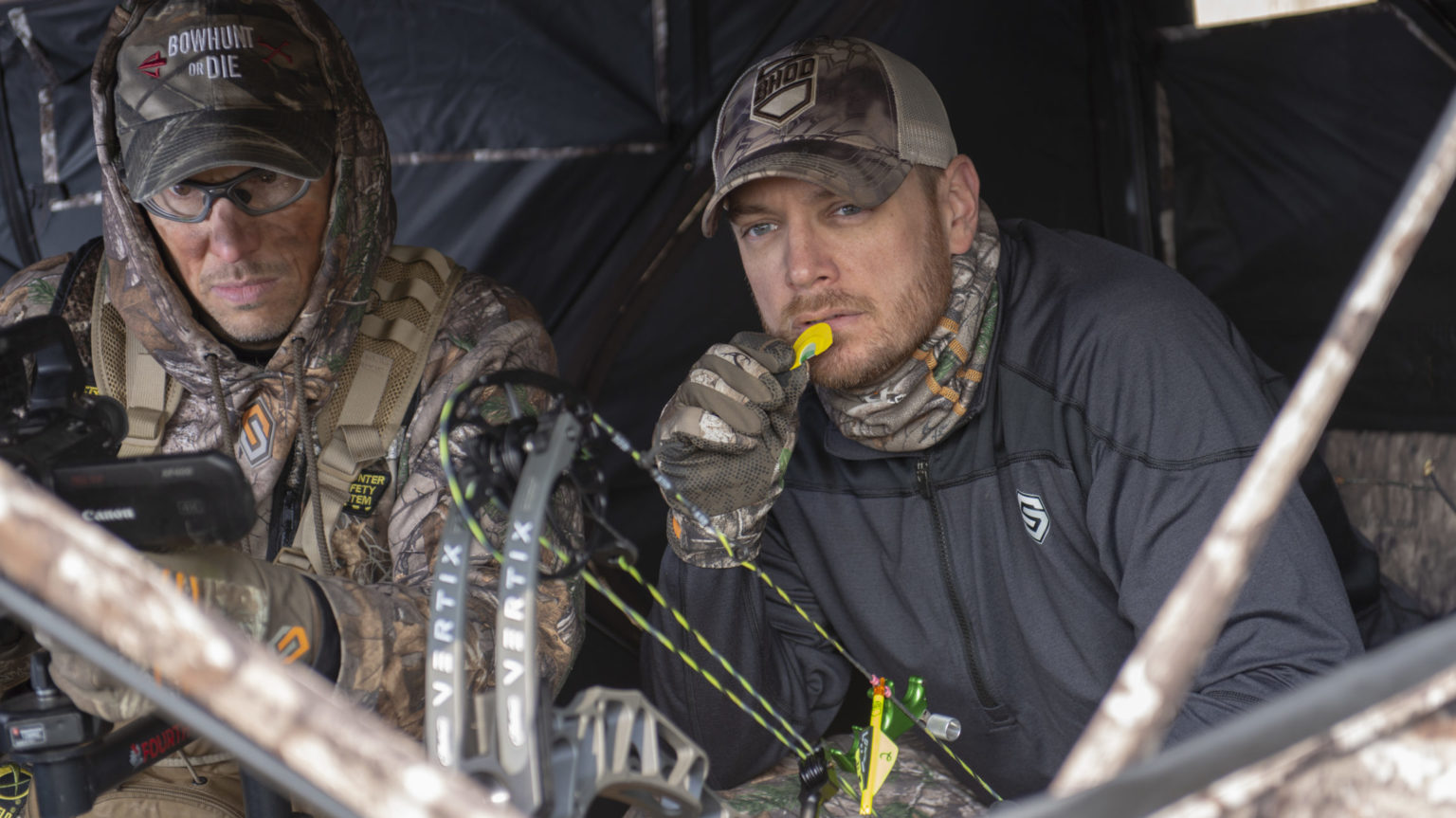
The biggest advantage of the diaphragm call—hands-free operation—makes it an obvious choice for bowhunters.
Since the mouth call is not affected by moisture—to the contrary, saliva on the reeds enhances its sound—the call is the best choice for rainy-day gobblers.
Mouth calls have been around for 150 years. Early diaphragms were big and crude, but modern calls are streamlined and high-tech, featuring either a latex or prophylactic reed crimped into an aluminum frame.
A tape skirt covers the frame and acts as an air seal.
There are many mouth calls on the market. Some have one or two rubber reeds; others three or four.
Some calls have clipped or notched reeds designed to put rasp into your yelps.
How to Mouth Call
Place a diaphragm in your mouth with open reeds facing forward. Tongue the call up to the roof.
It shouldn’t sit too far forward or too far back in your mouth. Your tongue should touch the reeds and extend a half-inch or so to the front of the call.
If a mouth call feels too wide and bulky, trim the tape skirt a little. You can also bend the aluminum frame slightly downward to make the call fit more comfortably and create a better air seal.
Two major keys to using the diaphragm: First, don’t blow air across the reeds, but bring it up and “huff” from deep in your diaphragm.
And work your jaw up and down when you call, just like when you talk.
Now, to mock the hen vocalizations:
- To cluck, pop air across the reeds while saying the word “puck” or “putt”. While you might drop your jaw a bit, clucking is more about popping or smacking your lips.
- To cutt like a hen in spring, string together a series of sharp, fast and irregular clucks. Cutts have a staccato quality, with notes that go up and down. Vary the amount of air you force across a call’s reeds while popping your lips.
- To mock the two-note yelp of a hen, the bread-and-butter call you’ll use the most in either spring or fall, run a high note and a low note together. Say “chalk” while moving your jaw up and down. Practice a lot to get the speed and cadence of your yelps just right.
- To cackle like a hen flying down from the roost, string together some fast, excited yelps. Say “kit, kit, kit, kit, kat, kat, kat, kow, kow, kow” while running air rapidly across a call’s reeds.
- To kee-kee or whistle like a young turkey in fall, say the words “pee, pee, pee.” Pin a call tightly to the roof of your mouth to create a good air seal. Bring your lips tightly together and let the whistles come out. To roll into the kee-kee run, a call young gobblers make in fall, back up your “pee, pee, pee” with “chalk, chalk” yelps.
- To purr like a contented hen, pin a call to the roof of your mouth, push air up from your chest and flutter the back of your throat. Sound tough? Well, it is and some hunters have a devil of a time purring on a mouth call. Keep practicing until you get it. Or purr on a slate call.
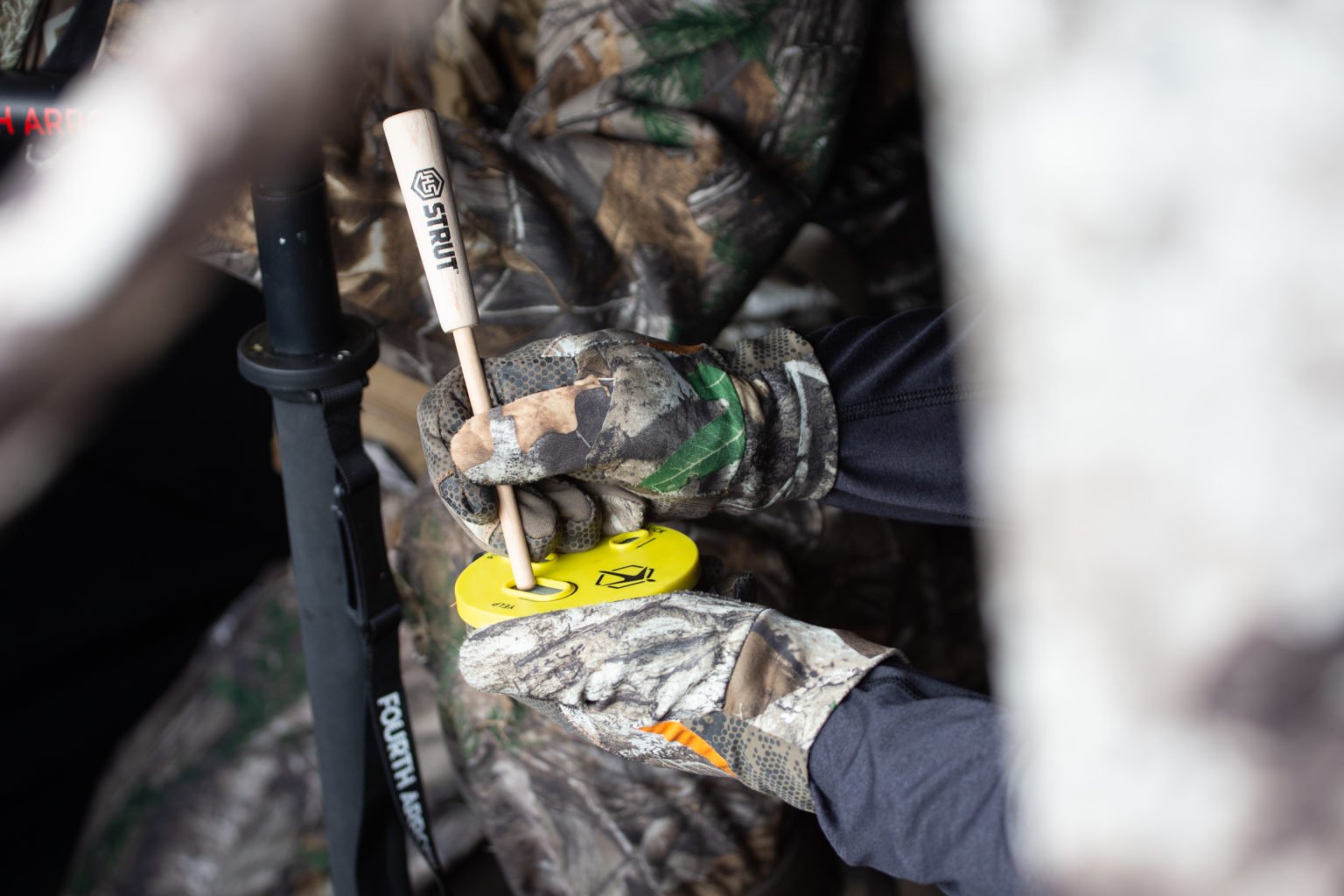
Pot-and-peg calls have been around since the 1880s, and they are popular today. Early calls were crafted of wood or even turtle shells, with crude slate surfaces in the middle.
Modern calls have come a long way. Today you can use a finely machined wooden, plastic or graphite cup into which is glued a slate, glass, ceramic, aluminum or copper surface.
To talk turkey, strike a surface with a hickory, ash, rosewood, acrylic or carbon peg. This call is easy to use and sounds great.
How to Slate Call
If you’re right-handed, hold a pot lightly in your left hand and up on your fingertips. Grasp a peg as if you were writing with a pencil.
Hold the call out in front of your body to keep from muting the sounds.
Hold a striker at a 45-degree angle to a call’s surface, and then run it lightly. Tweak the way you hold a peg to make the various calls.
Work a peg in the middle of a call’s surface to make deep clucks and yelps. Move the striker out to the edge for more trilling notes.
To create friction and make a call ring true, rub its surface frequently with an abrasive pad or sandpaper. Don’t forget to roughen the tip of a wooden striker from time to time.
Now, to make the key calls
- To cluck, place a peg on a pot, angle it slightly inward and pull a short stroke. Do not pick the peg off the surface; let it skip across the slate or glass. Put just a little pressure on the peg to cluck softly. Bear down harder for louder clucks.
- To cutt, serve up a series of fast, broken clucks. Bear down fairly hard on a peg and skip it over a call’s surface for five seconds or so, but again, don’t pick up the peg. There is no rhythm or cadence to cutting.
- To yelp, run a peg on a surface in straight lines or ovals. Make small ovals or short lines for soft yelps. Put a little more pressure on the peg and expand the ovals or lines for louder yelps.
- To cackle, string together some fast, raspy yelps. Finish up with a few reassuring clucks, like a hen makes once she flies down and hits the ground.
- To purr, exert just enough pressure on a peg so that it skips lightly over a call’s surface. Run little straight lines or make half-circles. Purring on a slate call is tough to beat for pulling a tom those last few yards into bow range.
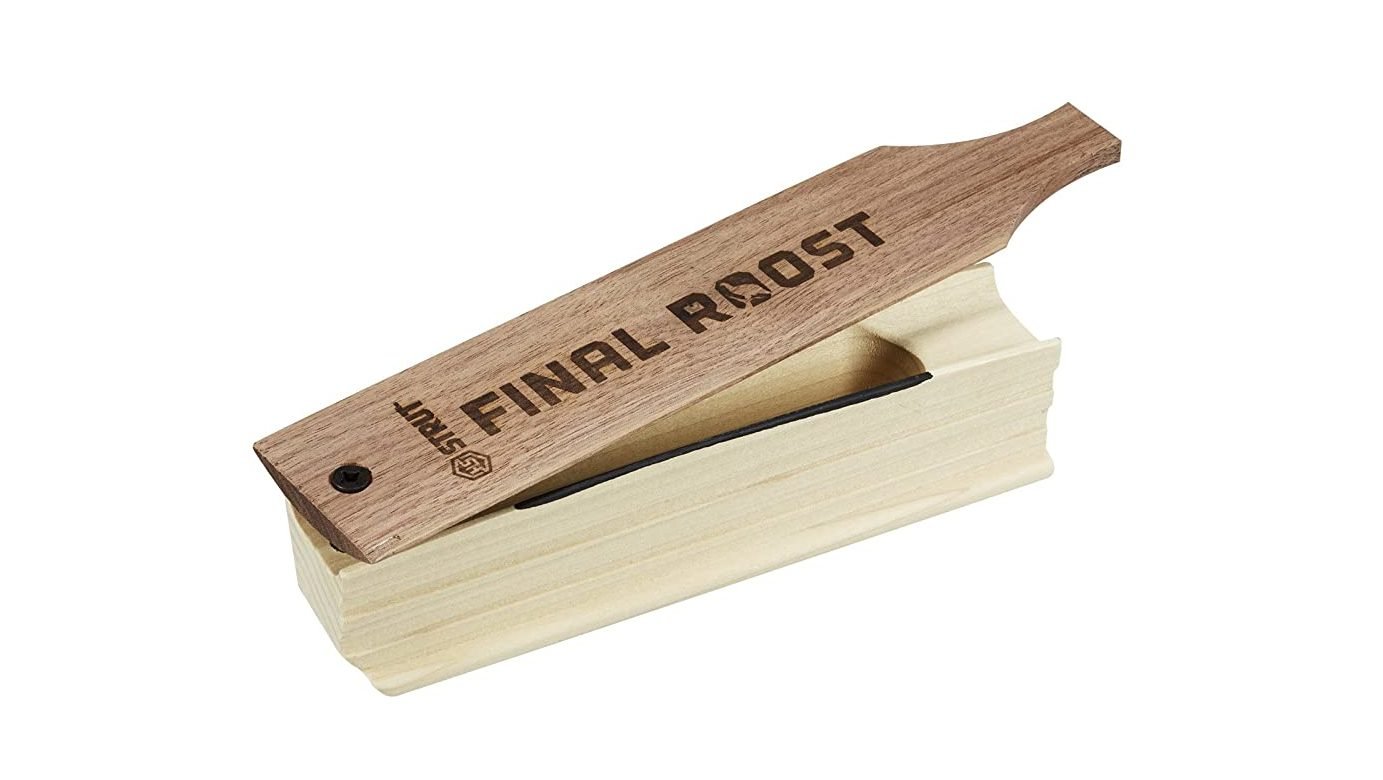
An Arkansan named Gibson patented the first box call back in 1897. The big call has withstood the test of time and is still popular today.
Most long, rectangular boxes are crafted of wood—maple, cherry, walnut or poplar—and have free-swinging wooden handles or “lids.”
The box is a snap to use. Pick one up, fiddle with it for a few minutes and you’ll be talking good turkey.
How to Box Call
Hold a box lightly in your left palm and work the lid gently with the fingers of your right hand (vice versa for lefties). Keep your fingers off the sides of a box so you won’t deaden its sound.
Some people run a box better with a vertical hold. Lay a call in the palm of your hand, turn your hand perpendicular to the ground and scrape the lid up and down.
Chalk a box call before you hit the woods, and a couple of times during a hunt. Use wax-free chalk that won’t gum up the grain of the wood.
To make the calls:
- To cluck, pop the handle lightly on the call’s sounding lip. Another way: hold the call in your palm, press your thumb semi-tightly on the top of the lid and tap it with your other hand.
- To cutt, bear down on the handle a bit and pop or tap a series of fast, sharp clucks. The vertical hold works great for cutting.
- To yelp, move the handle an inch or less off to the side of the sounding lip and “close the box” to run two notes together. Light pressure on the lid will give you raspy yelps; put a little more pressure on the handle for higher-pitched notes.
- To purr, set the lid off to the side of the sounding lip and drag it softly across the lip of the box.
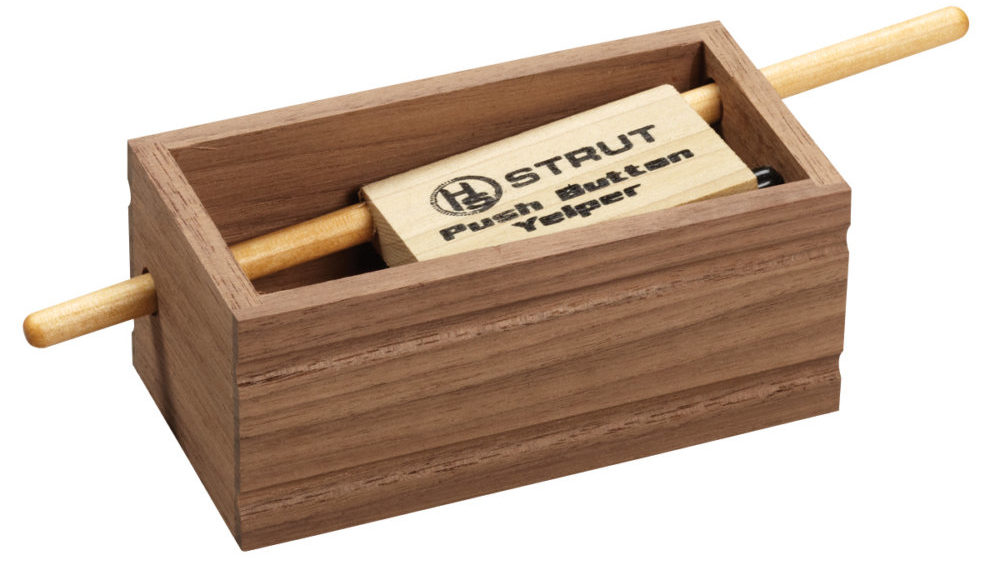
The push-pin is easy to use. Hold the call lightly in one hand and simply press the top of the pin with your forefinger to yelp.
For louder yelps, pull longer strokes on the bottom of the pin. To cluck, tap the pin against the palm of your hand or your leg. To cutt, speed up those clucks.
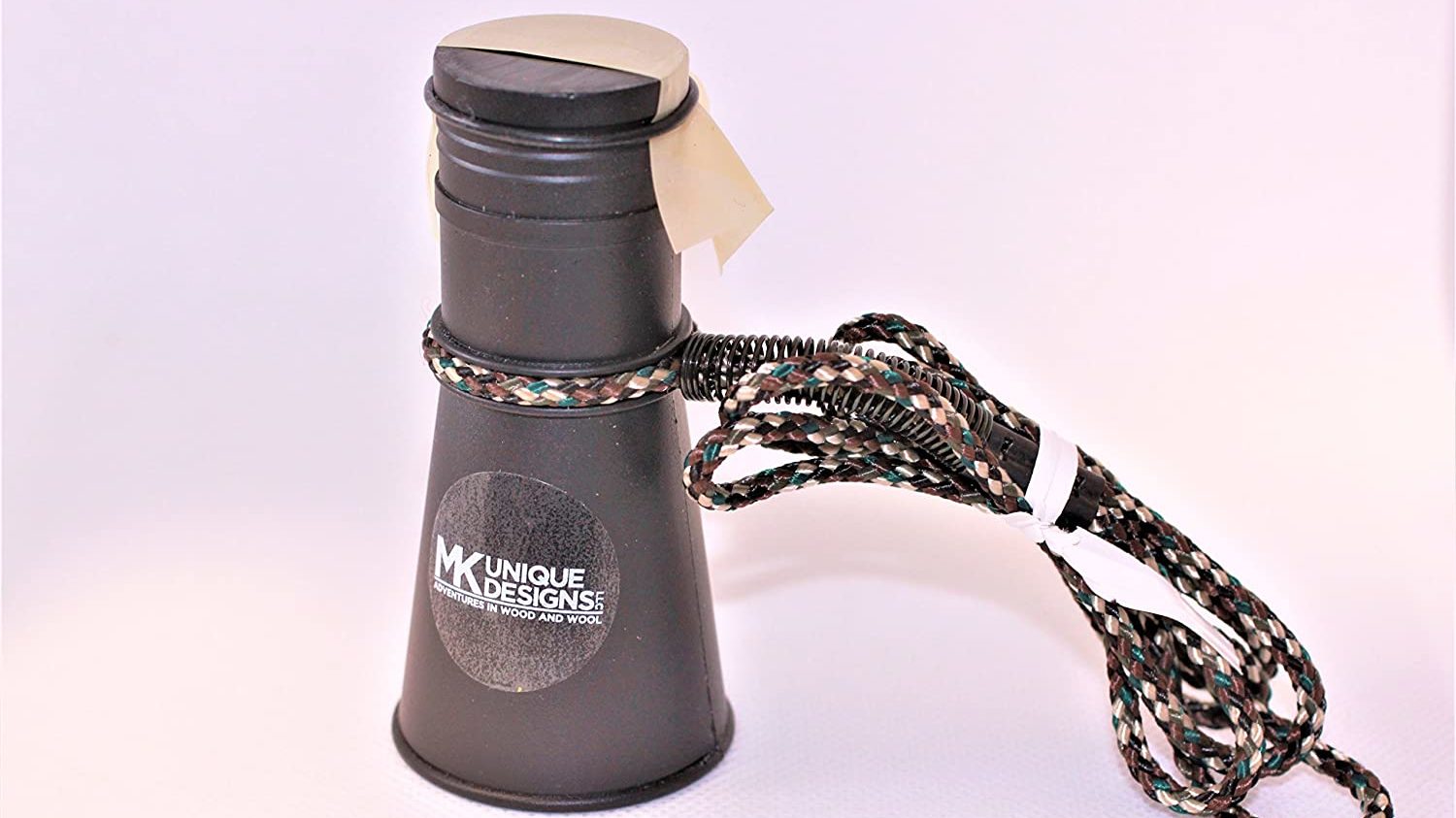
To round out your calling arsenal, carry a tube call in your vest.
A small, hollow tube fitted with a latex reed is great for producing hollow-sounding clucks and yelps, which add yet more diversity to your calling routine.
On a tube you can also gobble or mock the “aggravated purr” of two gobblers fighting.
The key to running a tube is to fit your lower lip properly on the call’s reed. This takes practice and trial and error, as tubes from the various call companies are made a little differently.
Tip: Tipping a tube call slightly upward helps to position your lips just right for clucks and two-note yelps.
Don’t blow into the call, but huff air up from your chest as if you were calling with a diaphragm.
Now go call in a big tom, good luck.
